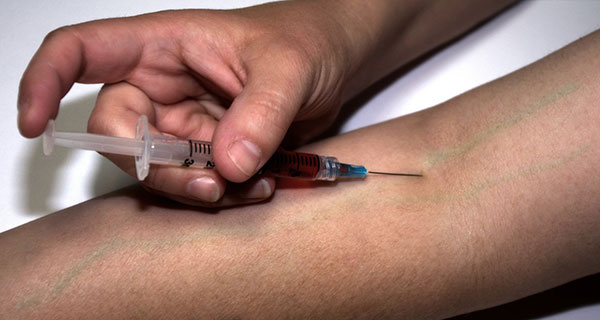The truth about safer supply programs and youth addiction
 Faced with mounting evidence that “safer supply” programs are harming Canadian youth, some prominent harm-reduction activists are now peddling conspiracy theories and blaming the media for rising opioid addictions. This is absurd.
Faced with mounting evidence that “safer supply” programs are harming Canadian youth, some prominent harm-reduction activists are now peddling conspiracy theories and blaming the media for rising opioid addictions. This is absurd.
These programs distribute free addictive drugs – predominantly hydromorphone, a heroin-strength opioid – under the assumption that this practice “saves lives” by mitigating the use of riskier street substances.
In truth, most safer supply clients “divert” (sell or trade) almost all of their hydromorphone on the black market to acquire stronger illicit drugs, which then floods communities with opioids and fuels new addictions among adults and youth.
Addiction experts have been sounding the alarm over safer supply diversion for more than a year – but harm-reduction activists have falsely insisted there is no evidence that this diversion is widespread or that youth are being harmed.
 |
| Related Stories |
| BC is crumbling under the NDP’s permissive drug policies
|
| Decriminalization won’t solve Canada’s drug crisis
|
| Safe supply programs creating a surge in new opioid users
|
However, the Centre for Addiction and Mental Health (CAMH) published survey data in May showing that, between 2021 and 2023, the number of Ontario students who reported using pharmaceutical opioids for “non-medical” purposes skyrocketed by 71 percent, while the number of students who said that it is easy to obtain such opioids rose by 42 percent.
As safer supply only became widely available in the province in 2020, these figures have raised eyebrows.
Addiction physicians have said that, based on their clinical experiences, safer supply is likely fuelling this trend. CAMH’s findings are also consistent with toxicology data released by the B.C. Coroners Service last summer, which showed that hydromorphone-related youth drug deaths spiked in B.C. after safer supply programs were expanded – whereas zero percent of such deaths involved hydromorphone in 2019, by 2022 that number had spiked to 22 percent.
Similarly, data recently released by the police in London, Ontario, shows that hydromorphone seizures skyrocketed by 3,000 percent after access to safer supply was expanded in that city.
Some harm reduction activists have begun acknowledging the risks that safer supply poses to youth.
“I’m not going to stand up here and say that some kids, some adolescents, are not accessing diverted safe supply and using diverted safe supply. Kids experiment with everything, and we need to be honest to ourselves that kids probably experiment with diverted safer supply as well,” said Dr. Andrea Sereda, head of the safer opioid supply program at London InterCommunity Health Centre.
But many harm reduction activists have, quite predictably, tried to undermine the impact of emerging data that confirms the impacts of safer supply diversion. With respect to the CAMH report, these activists seemingly accept the overall validity of its findings but have decided to blame the media, not harm reduction programs, for the rise in prescription opioid abuse among Ontario’s teens.
In a series of posts on X (formerly Twitter), Guy Felicella, one of Canada’s most influential harm reduction activists, argued that “right-wing politicians and other media” caused youth to experiment with prescription opioids by providing “non-stop coverage” of safer supply diversion since last year.
Apparently, large numbers of teenagers are reading the National Post and listening to Pierre Poilievre and then experimenting with opioids after being informed of how accessible and ruinous they are.
Felicella’s narrative was quickly picked up by other influential figures in Canada’s harm reduction movement, including NDP MP Gord Johns, who sits in the House of Commons health committee and is currently tasked with co-investigating the national opioid epidemic.
Honestly, someone should give these people tinfoil hats.
While scientific literature in this area is scarce, existing studies suggest that media coverage of drug epidemics either slightly reduces drug use or has no significant impact on it.
Meanwhile, decades of addiction research have shown that drug use increases when supply is more readily available – so, obviously, safer supply is, by a wide margin, the far more plausible explanation behind rising opioid use among youth (and that’s before even factoring in physicians’ clinical observations of young patients accessing diverted safer supply).
The timelines in Ontario also don’t support the harm reduction activists’ media conspiracy theories. While CAMH’s data suggests that teenage prescription opioid use rose between 2021 and 2023, coverage of safer supply diversion only ballooned after May 2023, when approximately 75 percent of the institution’s student drug surveys for that year had already been submitted.
But these facts are inconvenient to many harm reduction activists, who will seemingly resort to any narrative, no matter how fanciful, to distract from the fact that their failed experiments are getting kids hooked on free government-supplied opioids.
Adam Zivo is a Senior Fellow with the Aristotle Foundation for Public Policy.
For interview requests, click here.
The opinions expressed by our columnists and contributors are theirs alone and do not inherently or expressly reflect the views of our publication.
© Troy Media
Troy Media is an editorial content provider to media outlets and its own hosted community news outlets across Canada.


